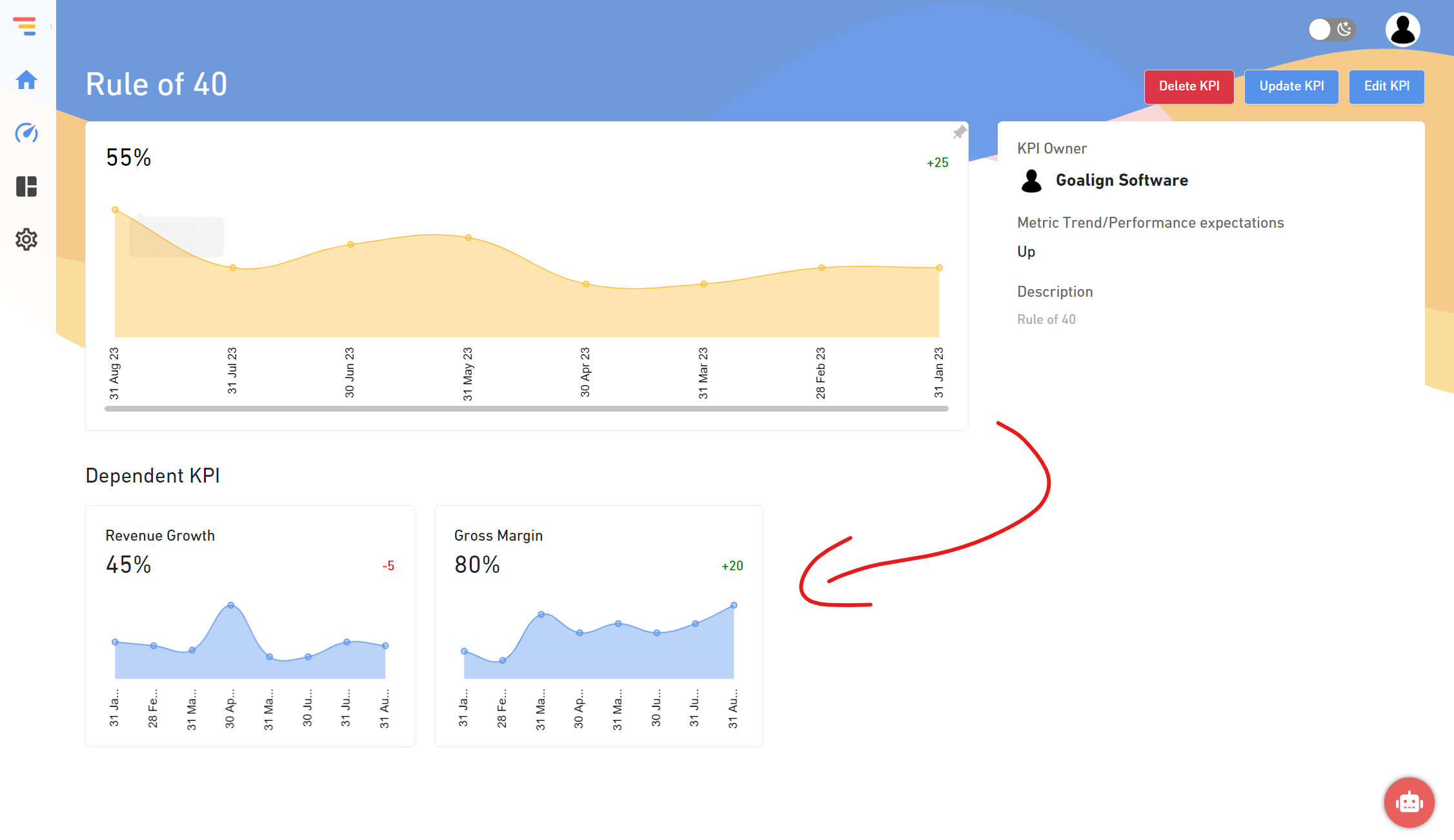Introduction:
OKRs are just a technique of looking at what you want the long term result to be, what actions you’re doing, and what results you’re obtaining to make modifications along the way. It allows your team to take a more comprehensive look at the big picture and break it down into manageable objectives that can be tracked.
OKRs, or objectives and key results, are a method of arranging your goals and current metrics to link what your team is accomplishing with each activity related to your product and long-term progress. OKRs for product marketing should be adapted to your product’s growth and development to ensure its success. OKRs make it possible to measure the performance of product marketing managers, which would otherwise be difficult.
What are OKRs for SAAS Companies?
Objectives and Key Results (OKRs) for SAAS Companies have proven to be a remarkable success for many modern organizations and have been the driving force behind unlocking corporate success. Small startups and influential organizations must iterate their objectives more quickly to maintain a competitive edge in today’s changing market. This also demonstrates the substantial shift from focusing on output to concentrating on results.
OKRs, which have been implemented by Google, Walmart, Netflix, and others, are increasingly being utilized by SaaS firms to stimulate growth by hitting predefined objectives. OKRs for SaaS firms, when applied correctly, assist focus on a clear set of goals, holding everyone accountable for what they do and how they contribute to company success.
8 Ways to Focus a SaaS Marketing Team Using OKRs
If you need a primer, our Content Marketer Laura did an excellent job in her essay on utilizing OKRs to keep your team goal-oriented. Instead, I’d want to share some of the errors I’ve made while utilizing them to focus a SaaS marketing team in the several previous quarters. More importantly, how you can prevent getting the same scars as me. Here are the eight most important lessons we’ve learnt thus far.
1. Request that your CEO establish a focus
The goal of OKRs is to create a shared focus inside a company. That alignment must begin at the top. This is a single number from the Lean Analytics book that you care about the most at the current stage of your developing firm. It will fluctuate as you progress, but there is one measure you should prioritize above all others at any given time. Communicating this emphasis to your team members and investors will help you focus your efforts.
2. Design your pipeline backwards
You’ll need to frame your objectives and critical outcomes around attaining that amount now that you’ve decided on a target, which most likely entails increasing MRR. This necessitates the establishment of specific baseline measures as a starting point. The metrics for which you will require numbers are as follows:
- Current MRR – What was the overall MRR after the preceding period?
- MRR growth target – How much do you want to increase MRR by each month?
- Conversion rate from lead to paying customer varies depending on your sales and marketing plan. Still, in SaaS, a leader is typically a trial sign-up or obtaining someone’s contact information via a piece of content or an event.
- Average Monthly Sale Price (ASP) – The current monthly revenue earned by each new client. Divide the total MRR from all customers who joined up in the preceding period by the number of customers signed up.
3. Make a plan for how you will meet those goals.
When I go through the planning process based on lead objectives by month, I usually do the following steps:
- Take your lead objective and divide it into lead targets by channel depending on the percentage of leads coming from each drain in your Google Analytics acquisition reports.
- Divide that lead objective by your channel’s conversion rate from site session to lead. You now know how many sessions you’ll need to produce from each channel to meet your lead goal. To ensure you have a good sample of current data, utilize the average conversion rate from the past three months.
- At this time, I recommend considering how practical it will be over the following three months to develop each channel at the rate required for visitor acquisition. I’ve made the mistake of overestimating organic media in the past, so be cautious while doing so!
- Then, meet with the team to discuss what activities you can undertake to hit each objective per channel and develop a plan together.
4. Determine whether your goals are realistic regarding personnel and budget.
At this point, there will be some amusing back and forth with your CEO. On the other hand, your CEO would probably want to know at the start of the quarter if they need to invest more to meet revenue targets. At the end of the quarter, it’s preferable to discover that you didn’t invest enough to get there. If it has to be discussed, have the discussion!
5. Guidelines for establishing OKRs with your team
Finally, we arrived at the OKR section. I’ve created a template for SaaS Marketing team OKRs based on our experience creating OKRs in the team here. You may duplicate the Google Doc and make changes to it. Sign Up to Goalign to use the OKR template for SAAS companies.
6. Make the OKRs visible to foster cooperation and accountability.
Making OKRs transparent and visible to everyone in a company is part of the OKR culture. This does three important things. For starters, it encourages the rest of the team to pitch in when they can contribute some knowledge to assist with other team members’ OKRs.
7. Examine metrics
I’ll freely confess that this isn’t something we’ve done enough of, but if you’re going to commit to OKRs, then every 1:1 or team meeting should begin with a discussion of progress toward targets.
8. Remove OKR evaluations from compensation reviews.
It is critical to separate remuneration and performance evaluations from OKRs. OKRs are just a framework for concentrating your company’s efforts. If compensation is linked to OKRs, it encourages employees to fudge numbers and establishes readily achievable key outcomes. OKRs are utterly useless in this situation.
OKRs Examples for SAAS Companies
You now understand the OKR idea and how to create OKRs for your SaaS firm. Let’s begin with the training. Here are some examples of OKRs and how they appear for SaaS companies:
Objective 1: Maintain blog frequency and organic traffic increase.
- Key result 1: Write X blog entries on topics A, B, and C.
- Key result 2: a 65% increase in organic search sessions compared to Q1.
- Key result 3: A rise of 70% in new trial sign-ups from organic compared. Q1.
Objective 2: Build a funnel to accelerate monthly recurring revenue growth.
- Key result 1: Increase MRR by 15% in Q2 to X€.
- Key Result 2: Increase trial signups by X% compared to Q1.
- Key result 3: Deliver an X% increase in demo requests compared to Q1.
Objective 3: Increase the number of leads generated via inbound marketing.
- Key result 1: The key outcome was a 20% increase in demo requests via PPC landing pages.
- Key result 2: The critical effect was a 2:10 percent increase in conversions from webinar attendees.
- Key result 3: 3:2x Ebook downloads are the main consequence.
Conclusion:
As we stated earlier in the post, there is no one-size-fits-all solution; However, if you follow our advice and tailor it to your team’s requirements, you won’t go far wrong. Quarterly updates for the product, sales, and marketing leadership assist in developing trust and credibility, which leads to a genuine feeling of ownership and belonging as you work together toward common goals.





